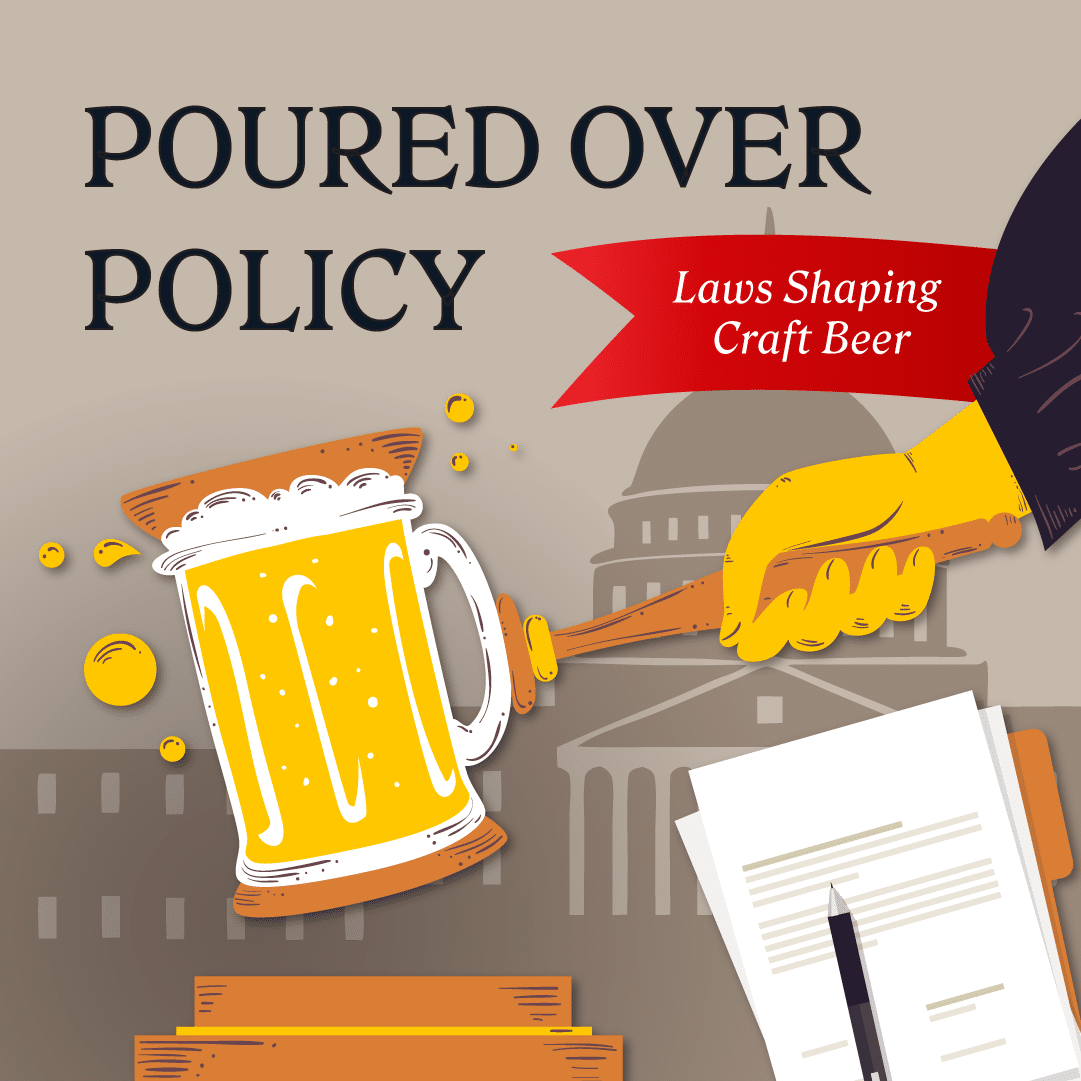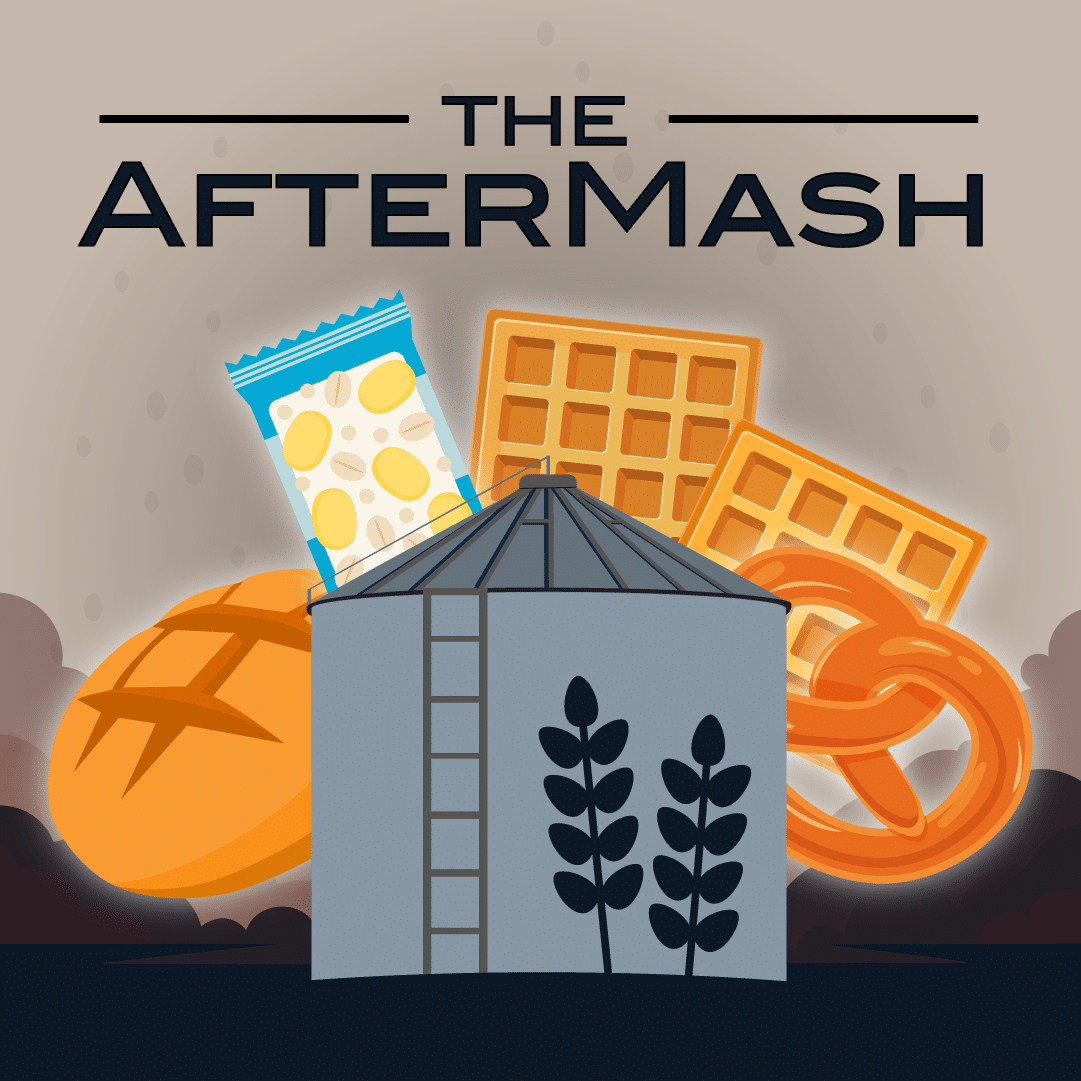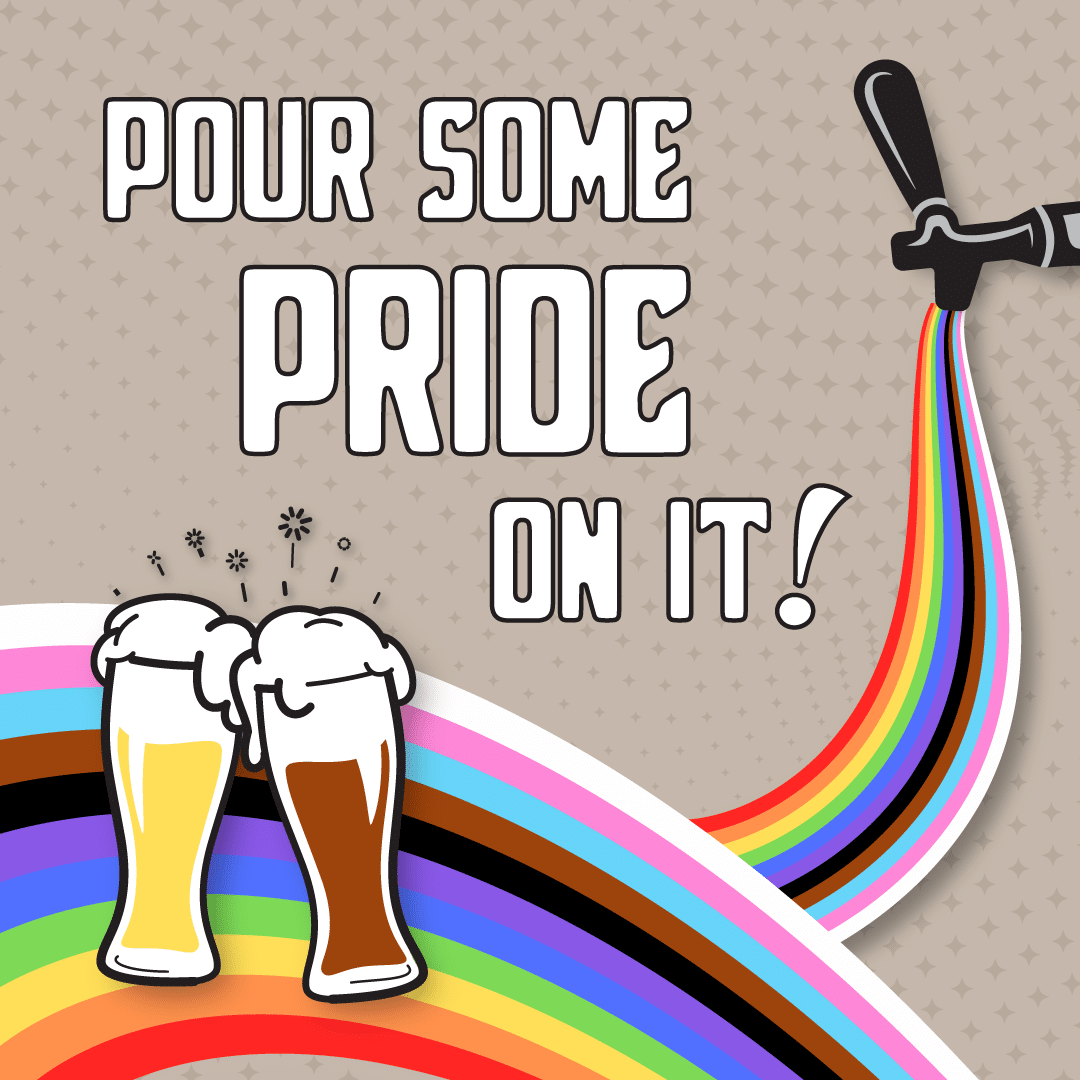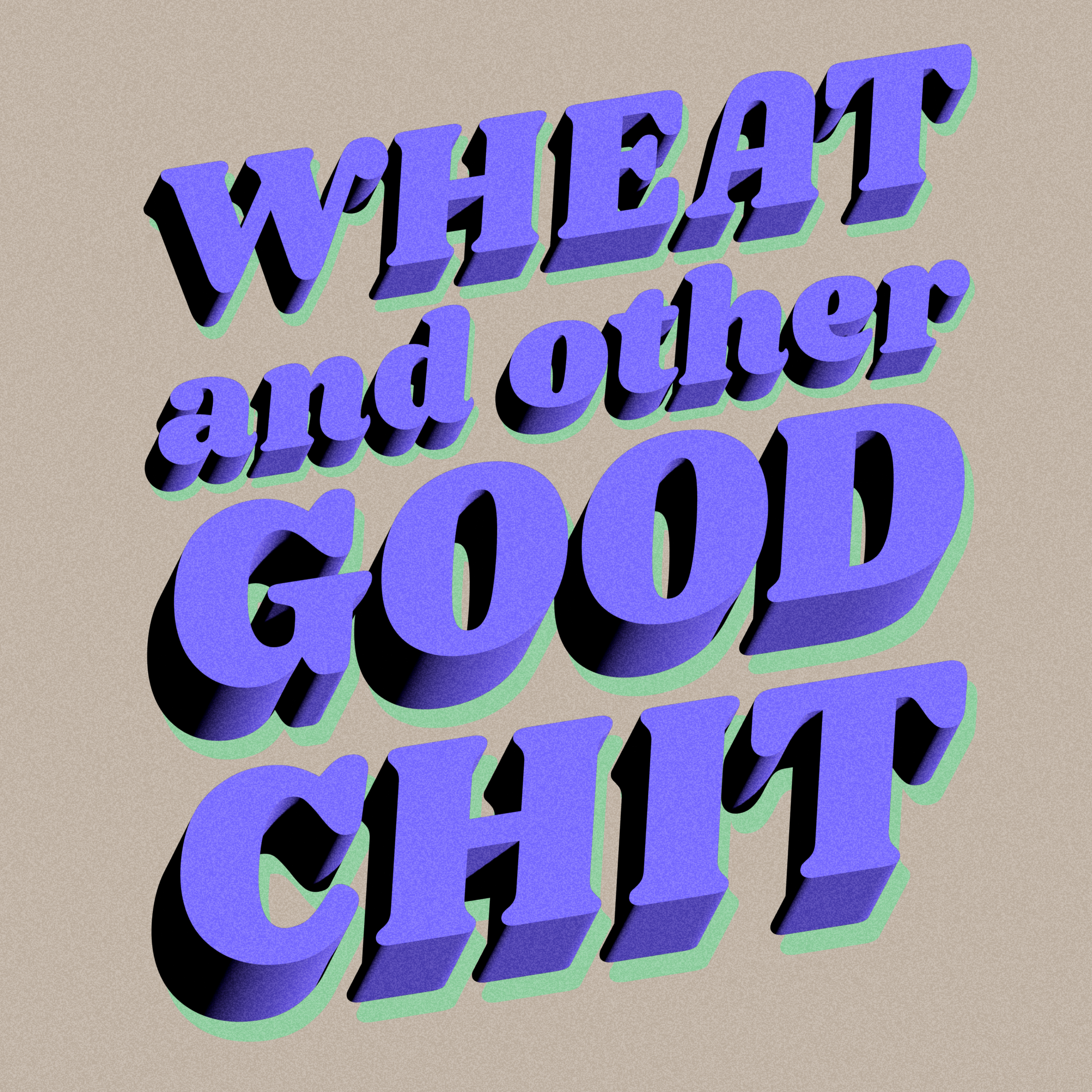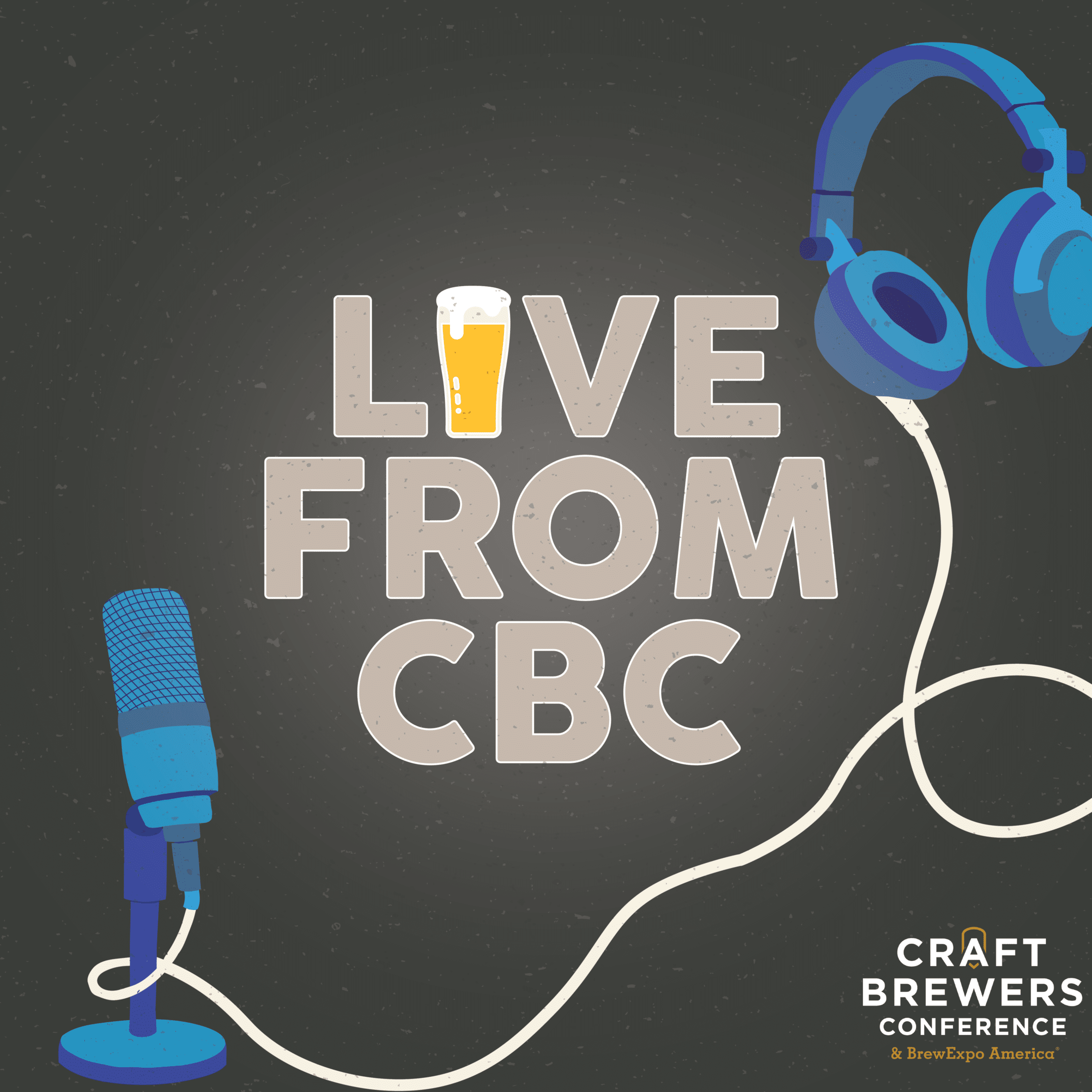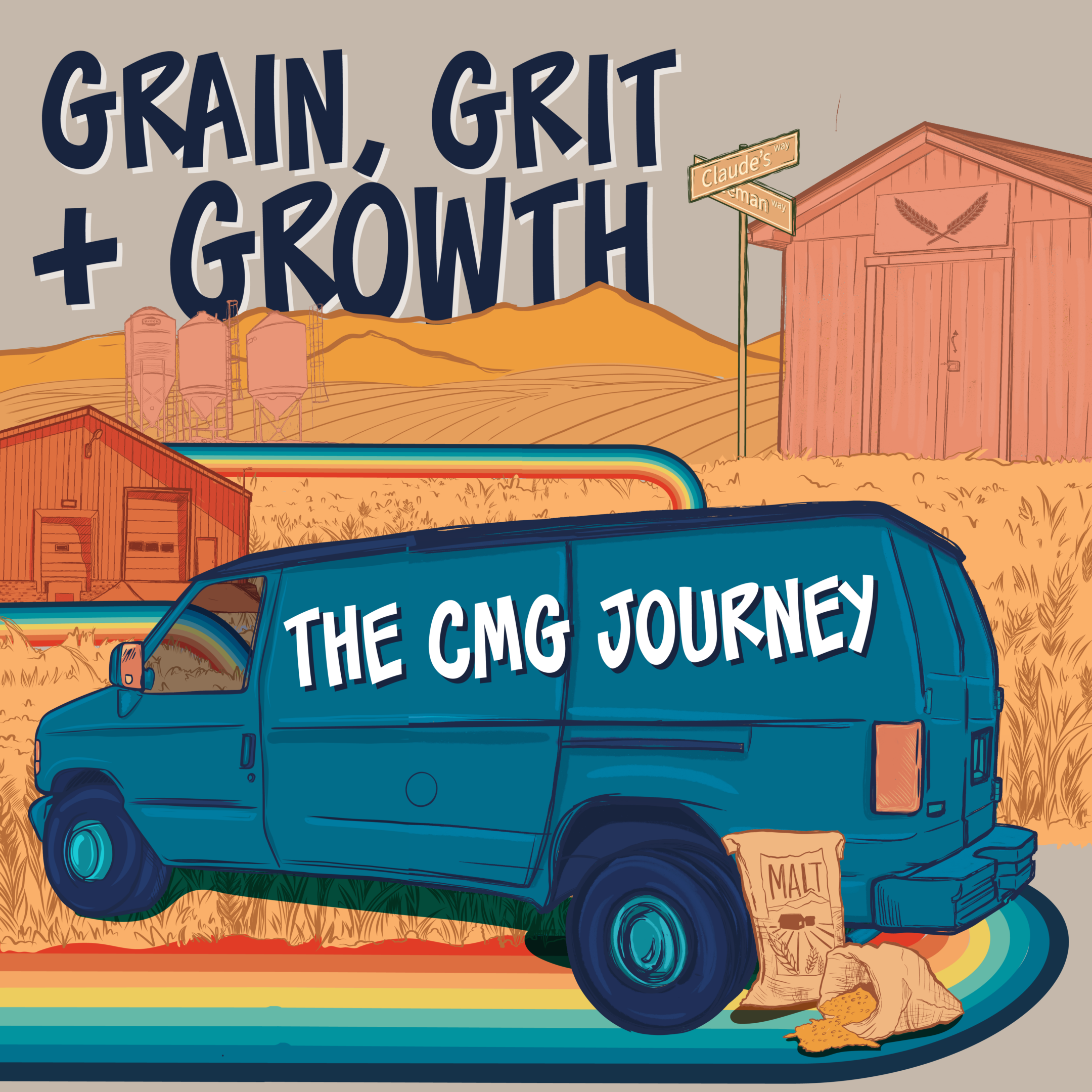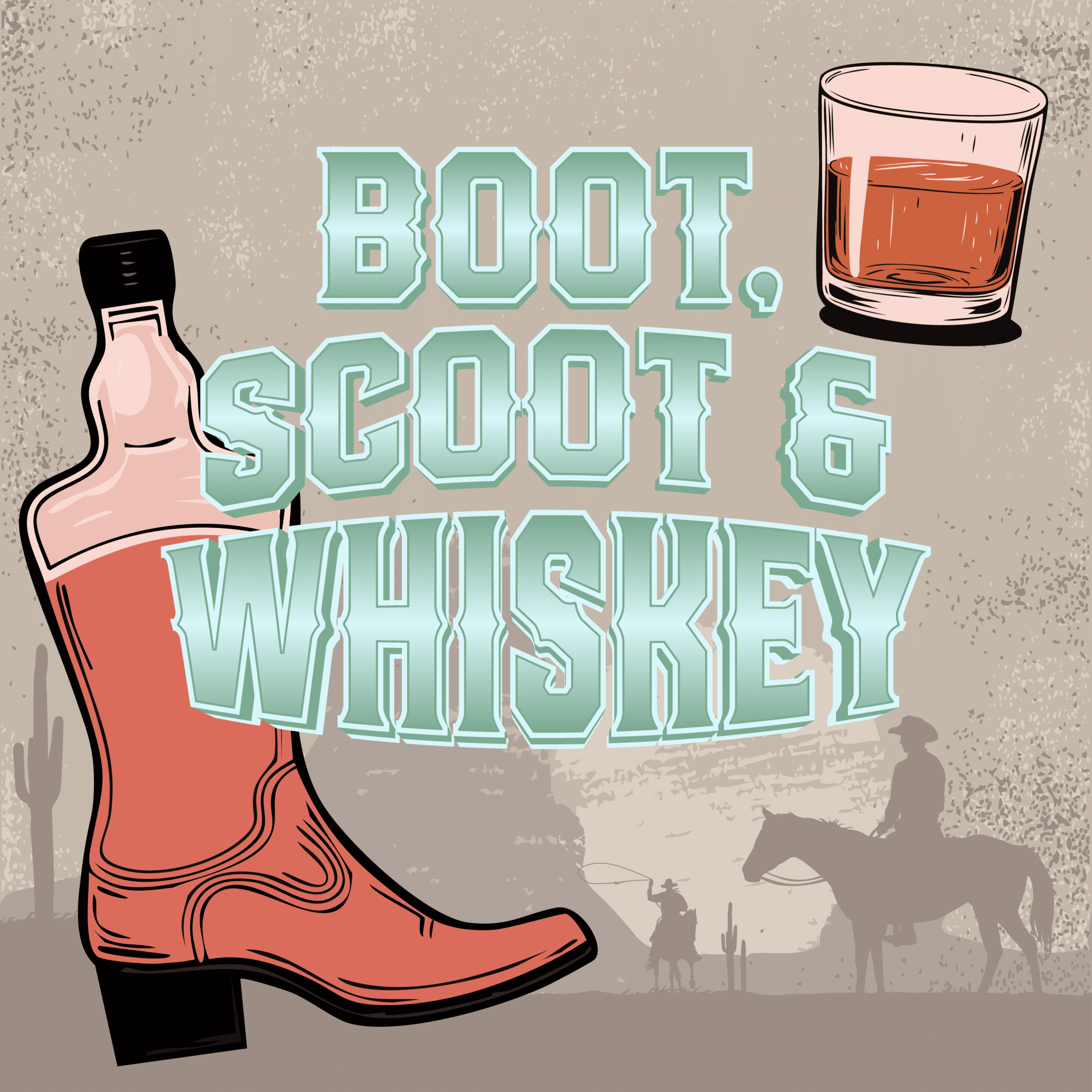
PODCAST GUESTS
Mitch Codd

Kevin Kawa
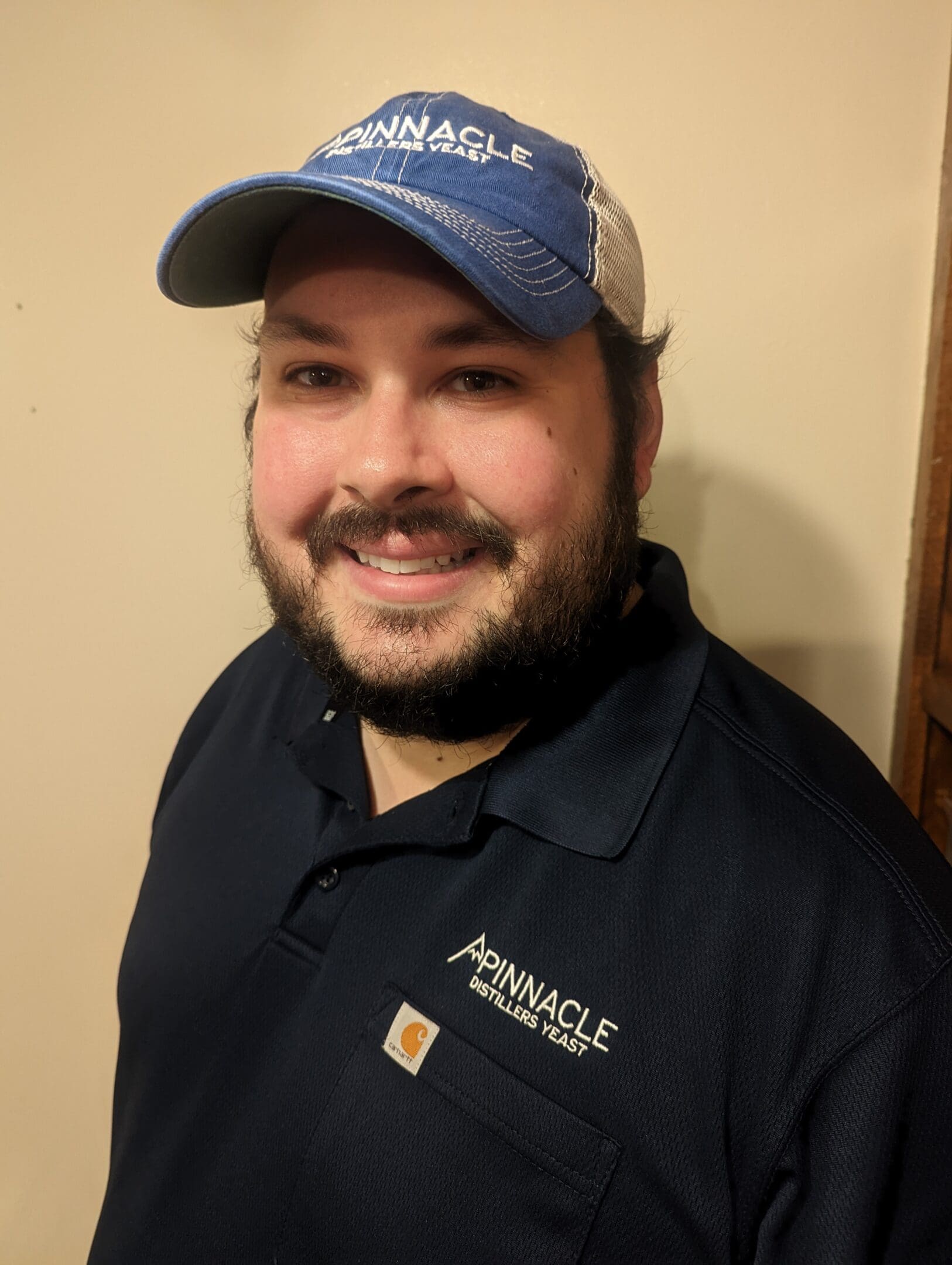
MORE EPISODES
SEASON 5, EPISODE 18: BEAUTY AND THE YEAST
PODCAST HOSTS:
TOBY TUCKER – DIRECTOR OF SALES, COUNTRY MALT GROUP
GEOFF FISCHER – TERRITORY MANAGER, COUNTRY MALT GROUP
CHRIS LOVETT – TERRITORY MANAGER, COUNTRY MALT GROUP
HAILEY NELSON – CREATIVE MANAGER, COUNTRY MALT GROUP
GUESTS:
MITCH CODD – TECHNICAL SALES LEADER, LALLEMAND
KEVIN KAWA – TECHNICAL APPLICATIONS MANAGER, AB BIOTEK
Key Points From This Episode:
- Distilling yeast and the differences between brewing and distilling yeast
- Flavor production in fermentation, including esters, higher alcohols, and other flavor compounds
- Challenges with fermenting certain substrates like agave and how yeast can be used to overcome those challenges
- Temperature and nutrient management in fermentation to optimize flavor
- New yeast products being developed, including an “American whiskey” strain
- The distilling education opportunities offered by Lallemand
Transcript - Beauty and the Yeast
EPISODE S.5, E.18
[BEAUTY AND THE YEAST]
Toby (00:09):
Welcome back to our listeners. Hope you’re having a great day and appreciate you joining us. We are at ADI this week, the American Distilling Institute, the 2024 Craft Spirits Conference and Expo in Baltimore. Come see us at Booth 518 if you’re out and about.
Cheyenne (00:24):
Today’s episode is dedicated to distilling, so you already know that we had to call upon our resident distilling expert, Geoff Fisher to help us co-host. We start off by chatting with Mitch Codd, technical sales leader at Lallemand, and then our podcast producer, Hailey Nelson, takes over the mic with Geoff Fisher and territory manager Chris Lovett to continue the conversation with Kevin Kawa, technical applications manager at AB Biotek. Hailey has edited this episode, this podcast for five years and I don’t think she’s ever been behind the mic. This is a first.
Toby (00:56):
I’m excited to hear about that. Yes, I’m sure it’s going to go well.
Cheyenne (01:00):
Me too. We finally get her in front of the mic instead of behind it, so that’s awesome. Together in this episode, we explore the impact of enzymes on yeast performance and how different yeast strains affect flavor compounds. We also delve into some exciting innovations in the distilling and craft spirits industry just in time for ADI.
Toby (01:18):
Yeah, and I like we’re continuing to add more distilling podcasts and then we’re also really focusing on distilling enzymes in our portfolio and looking at what we can do to help out in the distilling world. So we got more coming soon. We’re constantly evolving. Like I said, our portfolio is growing on the distilling side, so let’s jump right into it with our first guest, Cheyenne. Good morning Fisher. Geoff Fisher. What’s up buddy?
Geoff (01:46):
Hey, morning Toby. How are you?
Toby (01:48):
Pretty good. I appreciate you getting me up at the butt crack of dawn here in Central time.
Geoff (01:52):
Always my pleasure.
Toby (01:53):
Yeah.
Geoff (01:54):
Always my pleasure. [inaudible 00:01:59] to stay late for the Pacific time calls.
Toby (02:02):
Yeah, Mitch, I don’t know if you’re aware or where you’re at, but I’m here in the central and we set this up because Geoff is on the road actually working, doing things. So I was up early trying to get prepared for this and I got two kids just going at each other’s throats getting ready for school and so a little bit of a blessing that I don’t have to deal with that this morning. But yeah, anyways, I hear them screaming upstairs.
Mitch (02:27):
Yeah, but you got to see the nice sunrise this morning and it’s all good, right?
Toby (02:30):
That is true.
Mitch (02:31):
And you get to talk with us.
Toby (02:32):
That’s exactly right. I don’t mind getting up for talking the two of y’all. I’m excited about this because obviously the listeners know Geoff Fisher, but we are happy enough to have Mitch Codd from Lallemand on with us today, and when we were talking about this particular distilling episode centered around yeast and enzymes, we knew exactly who to go get and I’m glad that you agreed to jump on with us, Mitch. So appreciate you joining us.
Mitch (03:05):
Yeah, I’m flattered. Flattered to be your first choice here.
Toby (03:08):
There you go.
Mitch (03:08):
Thank you.
Toby (03:09):
Well, let’s just dive right into it. Yeah. Tell us a little bit about yourself and your experience in the industry.
Mitch (03:15):
Yeah, so my name is Mitch Codd. I am a microbiologist by training and my first job for 5, 6, 7 years I think was in a biotech where we worked directly with yeast, different strains of yeast and we genetically engineered them for fuel ethanol fermentations in Brazil. So that was a really, really cool way to start my career. I don’t think I expected to end up there while I was in school. I think it’s a pretty cool first job traveling to and from Brazil and around the countryside working on these yeast strains and these crazy, crazy scale fermentations in another country. So really kind of cut my teeth in microbiology there. Learned a ton on yeast ecology and fermentation ecology and how all of these different microorganisms interact in the fermentations and all of the stresses and how to beat those stresses.
(04:20)
So when this job came up, I jumped at it because it just seemed like the next cool leap. And again, as a microbiologist in college, I don’t think anybody thinks they’re going to end up working with the coolest distilleries around the country and optimizing their process for them. Really fun way to practice my degree. So I guess probably should introduce what I currently, I’m the technical sales lead for US distilling for Lallemand biofuels and distilled spirits. So my role is really traveling around the country and working hands-on with all of these distilleries to help them produce better spirits.
Toby (05:09):
Oh, that’s awesome. And similarly, we have Geoff Fisher on our end who’s been on the podcast several times. He’s kind of our resident distilling guru. He’s our territory manager that covers Ohio, Kentucky, Michigan Indiana, albeit a lot on the brewing side, but he dabbles quite a bit on the distilling and all things distilling. So happy to have him join as well.
Geoff (05:33):
Morning.
Toby (05:35):
Geoff is mid-travel, so he was nice enough to peel off some time to join us as well. So Mitch, I’m going to get right to it, and this is a very broad question. It’s probably coming from my simplified brain here, but I just want to start the conversation. What’s the general difference between yeast options and distilling? That’s a big question.
Mitch (05:58):
It is a big question, but it’s a fairly simple answer. If we want to keep it simple, it’s genetics. These are different microorganisms, different lineages of this microorganism and they behave very differently. So if you’re looking at something between brewing and distilling, you actually have a fairly different lineage. They’ve evolved separately for a while. Same with bread and winemaking, stuff like that. We have these sort of distinct families of Saccharomyces and they have very different characteristics that come from them when they ferment. So realistically, we have just this huge, huge pool that we can pull from of genetic diversity and that changes the outcome that we get in the fermentation.
Geoff (06:55):
Specific Mitch, I was kind of looking around and I’ve played with a lot of different yeast over the years, both as a brewer and selling yeast to distilleries. What would you say from a flavor standpoint or from a performance standpoint, what really separates? I mean I’ve known distillers that use a brewer’s yeast and obviously with a lot of the beyond beer segments is people are making more simple types of fermentations, not necessarily malt-based leaning on distillers yeast. Without getting too deep into actual genetic workings of these, what would you say are the major characteristics between the two families?
Mitch (07:36):
Yeah, so I kind of break it down in two families there, but even within those families there’s an immense amount of diversity. So even if we just took distilling yeast, we have something that can ferment various sugar types, something that cannot ferment those sugar types. In brewing, you guys use that to your advantage if you want a little bit of sweetness in that beer and in distilling, we really just don’t want that. If we send sugars to the still, we end up with a flaw in the spirit. So genetically, those are kind of hardwired traits. Can we or can we not use this sugar type? The same can be said for things like kinetics. How fast does this ferment? In brewing, you may want that to kind of go low and slow for a bit and develop a certain set of characteristics and flavor and kind of slowly attenuate. In distilling, we just want to push it. In most cases we want this done in three, four days, send it to the still start over again, and it generally favors flavor that way as well. Yeah, that answer your question?
Geoff (08:47):
It does. It helps, definitely. It kind of pushes along a lot of brewers that are looking to get into potentially distilling to maximize their equipment or to look at different markets to enter. It’s always a thought that distiller’s use are more alcohol tolerant than brewers yeast, although we have a lot of brewers yeast that are very alcohol tolerant. Do you notice a big difference between the two families as you say [inaudible 00:09:21]?
Mitch (09:21):
Yeah, definitely. Yeah, and even within our product portfolio, we have quite the span of alcohol tolerance. I think just recently I took one of our strains up to almost 17% alcohol and that was in a really clean media, really difficult one to ferment, which it was basically white sugar. So these strains are incredibly robust. They’re just workhorses in a lot of cases, but we also have some that are a bit finicky and tough to work with, but we really like them because of the flavors that they develop. So we could do that same fermentation in six days, seven days, but get the exact flavor profile that we want. So again, it just kind of comes down to a lot of variety, but really that gives you an awesome toolbox at your disposal. If you know want this, we just kind of search into the toolbox and find a strain that will give it to us.
Geoff (10:21):
For sure. And same with brewing, right? You get a brewer’s yeast that’s very funky and develops a lot of depth of flavor where some of them are extremely clean and you want to taste the malt or the hops, not so much byproducts of yeast fermentation. On that, one more kind of question on the alcohol tolerance. Do you want one or the other for different types of spirits? So like you mentioned you push one to 17% for a very clean type of distillate or a very clean type of wash using sucrose, and then you mentioned some others that you want to develop more flavor in. Would you say that those would veer more towards rum and whiskeys where the cleaner type or the more high alcohol fermentations will lean more towards clean neutral type spirits?
Mitch (11:14):
Yeah, yeah, definitely. In a lot of that case, when we’re pushing 17% alcohol, we’re kind of doing it with a sugar feed that is probably a little bit cheaper. Maybe it’s like a byproduct feedstock from another industry and we’re trying to make ethanol, essentially making vodka. That’s usually what that comes down to or making a neutral spirit to make gin with. In that case, as long as it doesn’t taste bad, it’s great if it doesn’t taste like anything, right? Yeah. So the other side of that as opposed to making a very clean neutral fermentation to make a vodka or a GNS for gin is the agave spirits that are taking over in the US now. I assume you guys are seeing these as you travel around, but most of these craft distilleries are starting to play around with producing this American agave spirit in the sense of a tequila.
(12:15)
We just can’t call it that. And in that case, we’re using agave syrup, which is this highly rectified, cleaned up version of agave juice from Mexico. But when you do that, you kind of end up with just a carbon source. So it’s very similar to doing a sucrose fermentation where you’re kind of going to end up with a neutral profile. So if we choose the right strain of yeast for that, we can make a really big impact on the flavor profile just by the biology of the fermentation. So that’s something I’ve been playing with a lot lately is finding the right strain and putting it in the right environment to create the flavors that we want when the substrate is lacking for us in that department. And because of that genetic diversity that we talked about, it’s honestly not all that hard. If we look long enough to find the right match and the right environment for that, we’re making some pretty nice spirit now.
Geoff (13:18):
Agave is kind of a notoriously difficult carbohydrate source to ferment. I know a lot of distilleries that have used the agave syrup that we’re talking about have had difficulties getting them to get to terminal gravity. They get stalled a lot. The nutrient, it’s kind of a difficult environment, but is that where you’re talking about the genetics come in and they can help maneuver through what is traditionally a tough environment for yeast to complete fermentation and be able to get it to that end so you’re not sending sugar to the still?
Mitch (13:52):
Yeah, yeah, exactly. And it’s probably a really good case study for some of the things we’ve talked about already. Agave is primarily fructose as the sugar type and fructose is notoriously difficult to ferment for a yeast strain, so choosing the right one that has the genetics to support that transport within the cell makes a huge difference right there. And then another really key part of making that fermentation work is the pH, like I said, this is a [inaudible 00:14:29] clean. It is just a carbon source and with that means you don’t have buffering capacity, so as soon as you start fermenting your pH just plummets. So if you get a strain that can handle 3.4, 3.5 pH, that means you can ferment farther down into that sugar source and get a finished fermentation, whereas most of them will stop around that 3.8, 3.9, and then obviously the flavor too. If you’re making these congeners that are typical of a tequila fermentation, then you’re winning. You got it.
Geoff (15:07):
Well, that’s critical, right?
Mitch (15:08):
It is hard.
Geoff (15:10):
Yeah, I know it seems with a lot of consumers are looking towards mezcals is kind of the new bourbon. There’s so much diversity in those types of spirits as opposed to just narrow-band of tequilas, and so that’s where I think it opens it up to a lot of American craft distillers is to look kind of at that. Is that brand mez or is that sub looking towards mezcal is what they can produce in their own, what differentiates their agave spirit from the guy in the town over? So they’re looking towards that.
Mitch (15:49):
Yeah, definitely.
Geoff (15:50):
I think it’s definitely on the rise for sure. It’s what I see most up and coming is agave, and I also see it with rums as well. It seems like people are experimenting more and more with rums, pot stilling rums, not just necessarily column or doing a combination of pot and column still with them. And I know that molasses and that is also is always the easiest carbohydrate source to ferment. It leads me into a question though, which we’re talking about sugars, certain enzymes or a particular enzyme will, and this falls into what we also want to discuss is that you’re able to invert sucrose to make it easier for yeast to ferment, like invertase enzymes. Is there other enzymes too, that makes the fermentation better that you can speak to?
Mitch (16:53):
Yeah, definitely. So starting with the invertase, that is an enzyme that yeast make themselves, at least in almost all cases. Our yeast strains are making that internally and you would be surprised how little yeast you need in a fermentation to invert all of that sugar. It’s an incredibly powerful enzyme. We’ve done some really interesting tests around that, adding it externally versus just letting the strain do it itself and it actually favors the strain to do it itself. So that’s where you kind of just let biology do its thing and it knows how fast it wants that sugar I guess.
Geoff (17:35):
Okay, so in the theory of making a sugar shine, you [inaudible 00:17:39] sugar wash and trying to create something relatively neutral. From your experience, it would be better just to let the yeast do its job as opposed to adding an external enzyme to invert that sugar?
Mitch (17:48):
In that case, certainly because it’s already producing it produces it at the rate it wants it, right? They actually have incredibly complicated mechanisms behind how that enzyme is produced and they’re generally regulated by the product that enzyme makes, which I think is really cool. So as it starts to make the product from the enzymatic breakdown, it starts to back regulate against that enzyme. So it’s kind of making a spoon-fed sugar for them. It’s really, really cool process.
Geoff (18:29):
That is a cool process and goes kind of against what I was kind of taught as a brewer 20 years ago. We wanted to invert if we used any type of sucrose in there, but for distilling, obviously the needs are very, very different and what you want out of the fermentation is very different, right?
Mitch (18:54):
Yeah, definitely.
Geoff (18:55):
Because the interesting thing that is that what I noticed in yeast strains is especially for distilling, is what you taste in the wash can be considerably different obviously than what you’re going to get through the still. I remember the first time I went to Scotland and had a sample of the brewers beer before it went to the still, it was tasted like sour German wheat beer. It was very banana, big esters, lots of things that you necessarily didn’t think were going to come through in a 10-year-old Scotch whiskey down the line or even what the new make tasted like straight off the stills.
Mitch (19:36):
Yeah, and it’s interesting, because those new makes are generally quite delicate too, right? The idea of making a Scotch is you want it to be fairly delicate for the most part and then let it slowly shine through all of these nice small flavors in the background. But when you taste the wash, very different, very different case.
Geoff (19:57):
You notice any particular characteristics or flavors. Like I said, I know in whiskey you want a lot of big fruity esters, lots and lots of that type of thing because of the oxygenation that goes on in the barrel and the transformations going on and development flavors. When you pick a yeast strain, let’s say for rum, is there specific flavors you’re looking out of that wash that you know down the line is going to transform into something interesting in the rum?
Mitch (20:31):
Yeah, definitely. There’s kind of like the subset of esters and congeners that distillers kind of know about in the isoamyl acetate is that sort of banana note that you were talking about in the mash. I really like that note. Some people it gets a bit much for, but generally in a rum we’re going to want to push that a little bit more because it can make up a significant portion of that flavor profile. Other things like ethyl octanoate, ethyl decanoate, those longer esters, they’re making these ripe fruit notes and certainly in a rum that you’re going to age for a long time, you’re going to get some barrel influence. You’re going to get some chemical manipulation of these flavors that you made in fermentation over a very long time. You’re looking to push those. You want a fairly bold spirit to age for a while. It’s what makes the complex rum 5, 6, 7 years down the line.
(21:36)
And there’s cool mechanisms that we can use. I’m sure you’re familiar with it in brewing too, using temperature to your advantage, using the pH or the mash to your advantage, stuff like this to manipulate how the fermentation is progressing to favor or disfavor some of those chemicals.
Geoff (21:58):
Yeah, temperature an interesting one, right? A lot of craft distilleries that I work with and even large distilleries, you can go into large commercial distilleries and have virtually no temperature control on their fermenters. It’s as nature provides them, so to speak, whatever temperature is obviously on really large fermenters there is, and there’s a lot of single malt producers that are using traditional brewing equipment, jacketed fermenters, but the temperature’s an interesting part of that and obviously not only does it affect flavor, but it affects what we were talking about earlier, which is how fast can you get through these, can get through all of it and create through all the sugar.
Mitch (22:43):
So the heat, the temperature can also be a fairly significant problem when you have these 10,000 liter fermentations and you’re trying to really knock it out in three days real quick so you can turn it around. That means a ton of heat generation in that exothermic reaction that fermentation. So you could start that fermentation at 75 degrees Fahrenheit and hit 110 and soon as you hit that 110 everything goes wrong. So really managing that can be really difficult too, and that’s a hard problem to manage if the equipment is not set up to manage that. We spend a lot of time with our customers trying to find creative solutions to managing that, which I guess is kind of fun too, but difficult.
Toby (23:35):
Hey, last week Mitch was Lallemands Alcohol School in Montreal, which y’all put on. I don’t know if you’ve been doing it for years or not, but it sounded pretty cool. The description was, “These school courses are designed to provide our delegates with detailed information on both distilled spirits and fuel ethanol processes.” Can you tell us a little bit about that program? Is it something that y’all do over at Lallemands every year or?
Mitch (24:03):
Yeah, it’s something we’ve been doing, I think for 40 years now. For quite a while. So we’ve got some really good history with this and we actually have two schools now. So we have the alcohol school in Montreal, it’s full length, it’s about a week long, and this was the one that we’ve been doing for 40 or so years now. And it’s like, it’s a very different vibe compared to ADI or ACSA a bit more professional. This is kind of where the largest spirit producers of the world have always sent their production managers and leads for continuing education. So some of those top shelf brands, we’ll be there for a week networking with them and learning from them too. Everybody, Lallemand does a lot of production or presentations. We bring in a lot of external presenters from the best distillers around the world, but just the networking as well when everybody gets in a room and starts talking about the issues they face and how they solve those issues.
(25:20)
Incredibly powerful and really, really fun to be a part of. So that’s the week long one, and we do see these large scale production plants and whatnot, and we also do a two-day one for craft distillers. So we brought that one on somewhat recently, so it’s a bit newer and it’s shorter, but it’s kind of just an abbreviated version of that long one, but focused towards craft and not pulling them away from the production schedule for too long. Usually a one man show or a two two-man show, and that can be a little bit difficult for the craft distillers. But absolutely, it’s an amazing experience and really high, high level education and it’s fun to be in Montreal all together.
Toby (26:09):
Oh yeah, I bet. Just my phone got blown up by Fisher texting me. Can I go to this? This sounds awesome. Sounds incredible. Can I go to this?
Mitch (26:18):
Well, we’d love to have you guys next year.
Toby (26:20):
Got to save a seat for him for sure.
Mitch (26:22):
That’d be great.
Geoff (26:23):
That sounds absolutely incredible.
Mitch (26:32):
Yeah, you should take a look at that, the agenda.
Toby (26:33):
We’ll have to do that.
Geoff (26:34):
Yeah, for sure.
Toby (26:35):
You mentioned ADI, we’re actually out here, if we didn’t mention that to listeners, in Baltimore and you’re presenting tomorrow, which is one of the reasons we reached out kind of right in the wheelhouse of what we’re talking about today, but your presentation tomorrow is called Tasty Biochemistry, How Flavors and Aromas are Generated in Fermentation. I don’t want to spill the beans, I want people to go sit down and listen to you, but can you give us a brief preview of that presentation?
Mitch (27:09):
For sure. Yeah. So a lot of the things we talked about already today, we’re going to kind of get in depth and show some real life examples of in this talk. We do these presentations, I think we’ve always had a presentation at ADI. We’ve always had at least one at ACSA. This is kind of our wheelhouse is education like we talked about with the Alcohol School. So I think we’ve got some really nice real world examples of how to use all these variables that we talked about and how the genetics underlying these strains can really affect the outcome. I mean, I’m a nerd, right? It is what it is. So I’ll find it fascinating to go real deep in this stuff, but realistically, even if you’re not a nerd and you’re a distiller and you just need a broader toolbox, this will give you a lot of tools to put in there.
Toby (28:07):
Really good. And then-
Geoff (28:08):
Yeah, it sounds incredible. I was just reading a little, just kind of a brief, a thing that we had from you, and it is some of the things we’ve talked about, but I love the idea of looking at the flavor production as it being dependent and set on some specific metabolic pathways, the strength of the yeast and how you can manipulate it. It sounds incredible. I wish I could pop my head in and listen a bit more to you, but I’m definitely going to pick your brain at the conference this week too, some more.
Mitch (28:40):
Good deal. Good deal. I would like that. Actually, I’ll take this opportunity to say I’m not going to do that talk tomorrow.
Toby (28:47):
Oh.
Mitch (28:48):
Yeah. So I have one of my colleagues giving that talk. I got a lot on my plate right now, and honestly, she’s perfect for it. Her name is Haley and she came from Fiddlehead Brewery. I don’t know if you guys have been there.
Toby (29:05):
Oh yeah, absolutely.
Mitch (29:06):
Yeah. Fantastic brewery, one of my favorite IPAs out there. So she’s going to give that presentation. She’s got some really cool other experience that I don’t have from brewing, but it’s going to be great either way.
Toby (29:21):
Yeah, very good. That’s awesome. And for those of you that are at ADI this week, be sure to swing by Lallemands booth. I believe it’s 909, is that right, Mitch?
Mitch (29:32):
Oh man, I wish I knew the number. Come find us. We got a big flashy booth.
Toby (29:38):
We have a lot of people that do a lot of research, I’m pretty sure that’s it, but yeah, Lallemands, everyone knows them. Go see them. Go say hello to Mitch and then go take a listen tomorrow on Haley’s presentation.
Mitch (29:53):
We would love it. Bring your problems. We’ll do some on the fly troubleshooting.
Toby (29:58):
There you go. One thing I’ve been thinking about this whole talk here is my next vodka brand, it’s going to be called, well, the slogan is going to be a gold. If it doesn’t taste bad, it’s good.
Mitch (30:11):
There you go.
Toby (30:12):
Right. So when you mentioned that, I was like, huh, it makes a lot of sense for vodka, but Geoff, can you see me coming out with a line of liqueurs or liqueurs like, “Hey, if it doesn’t taste bad, it’s good.”
Geoff (30:24):
Exactly. It’ll be a perfect entrance into the market. You don’t want that for rums. But-
Toby (30:32):
No.
Geoff (30:32):
Or I’ve been hitting some pot still rums kind of strange to make pot still rums lately, and man, some of those get quite funky. So I don’t know if they’re pleasant or not, but I’m still, the jury’s still out. But there’s some definitely interesting flavors out there.
Mitch (30:51):
The goal to just push, push on those flavors, right? We’ve had some really cool experience with that recently. We’ve started to again add another tool into our toolbox there and we’ve been playing with adding a bacteria directly into that rum fermentation. And I’ll tell you, that drives it right home for ester production. I think it’s kind of a unique method. I suppose in beer, they’ve been doing that for a while, but I don’t know. It’s a cool solution in rum and it’s been fun to mess around with.
Geoff (31:28):
That’s awesome. I’ve been looking into that too.
Toby (31:31):
Yeah. Well, today has been good and tasty and aboveboard. So Mitch, thanks so much for joining us today. And again, if you’re out at ADI, go by and say hello. Go by and check Lallemand out and what they have to offer. And Mitch, I appreciate your time again today and we’d love to have you on again at some point if you are up for it.
Mitch (31:53):
Yeah, that’d be great. Stop by for some tasty biochemistry tomorrow.
Toby (31:57):
There you go. All right, thanks to Mitch Codd. And Geoff, go get him.
Hailey (32:02):
All right Geoff, I am super excited about this next guest, but before we get to him, we need to introduce our special co-host for this segment. We are joined today by Chris Lovett. He is no stranger to the podcast. He was actually on our Live from CBC episodes last year in Nashville answering some of our trivia questions. Welcome Chris.
Chris (32:28):
Well thank you very much for that intro, Hailey. For those of y’all that have not had the pleasure of working with me or talking to me on a regular basis, I’m the territory sales manager for Tennessee, Alabama, Mississippi and Louisiana and am no stranger to a finely crafted distilled product.
Hailey (32:50):
Yeah, absolutely. And that’s why we are so lucky to have you here today. Geoff, shall we introduce our next guest? Are you ready for this?
Geoff (32:57):
I’d like to go ahead and introduce Kevin Kawa. He is the technical application manager for AB Biotek. We had Kevin on back on season three, episode 14, which was Distill My Art. Welcome Kevin.
Kevin (33:15):
Yeah, appreciate it. Thank you guys again for having me. I’m really excited to be here. Just a quick and quick and dirty introduction on myself. So I’ve been doing kind of things, distilled spirits ever since I first started working at a production distillery down in Florida, and I’ve moved from that to technical side of things. Been with AB Biotek for four years now and doing all things kind of yeast fermentation, just getting down into a lot of the nitty-gritty, fun, technical aspects of how to make some really, really good distilled products and how to do it with yeast and other ingredients, but really focusing on the yeast and how it plays with the sugar that you’ve created.
Geoff (34:07):
Very cool. Well, we talked a little bit about flavor creation and you talk about that a little bit. Currently, Pinnacle distiller’s yeast, we currently have four strains that are available commercially and I know that there’s other ones there in development and I know that you have done some active flavor trials, some distillation trials. Can you explain a little bit more about what you’ve done?
Kevin (34:35):
Yeah, absolutely. We could get into a little bit of what we’re working on and some of that fun stuff. So yeah, so really excited to talk about some of the innovation research that we’ve done. We’ve taken our Pinnacle brand and we’ve started to look at different flavor compounds and different yeasts, how those play out.
(35:01)
So what we’ve done is we started with over 3000 yeast strains in our Sydney Australia cold storage, narrowed those down to about 100 strains that would be good for distilled spirits, and then started to categorize those different strains as to what sort of flavor compounds they would produce, what kind of flavor impact they would have on different distilling processes, and then taking those flavor compounds and really kind of doing some analysis on them to figure out what’s at high end, what’s at low end, and taking all of that information, really kind of compiling it and finding strains that we think are unique are really, really flavor-forward and identifying what those flavors are as well. So that’s a little bit of a kind of teaser of some of the innovation that we are working on, especially when it comes to flavor in distilled spirits.
Chris (36:02):
Now when you speak of flavor, I assume you mean esters and the flavors that are derived from those esters that developed during the fermentation process, correct?
Kevin (36:14):
Yeah, so it’s a lot more than just esters. Really, if you think about a fermentation process, you’ve got a majority of it going to ethanol and CO2, those are your two main products, that’s actually about 95% of what the yeast is producing, but that other 5% is kind of everything else. So it’s absolutely esters, it’s also higher alcohols, it’s also other congeners and those sorts of things. And then those actually play with each other a little bit too during the fermentation. So you can have short chain esters, long chain esters, all sorts of different flavor compounds, and we kind of tried to do some GC analysis to identify those flavor compounds.
(37:02)
Looked at over 200 different ones that we had identified and then kind of did from a yeast baseline, looked at different standard deviations on those flavor compounds and if it was at least one standard deviation higher or lower depending on those flavor compounds, we thought that was significant and then tried to pair that information that we found up to kind of a base flavor that the yeast is giving off because our sensory and our tongues are really, really good at picking up at small, I mean parts per million and parts per billion on some of these compounds so they can really have a strong sensory impact outside of just again, kind of the ethanol that has been produced.
Chris (37:54):
When you’re running this test product through a still, are you seeing some of these secondary alcohols and esters greatly changed during the distillation process and kind of give you flavor profiles y’all were not expecting or kind of surprising you with the results going from that fermented product to that distilled product?
Kevin (38:21):
A little bit. I mean a lot of what’s going on in distillation is concentrating. So when you’re tasting the fermented product, it might be, oh, you’ve just got a little hint of it because you’re kind of really dilute, but once it’s getting distilled, you’re concentrating it up and where you’re making your cuts and what you’re kind of doing with that has an effect.
(38:45)
Obviously distillation requires heat unless you’re doing some sort of vacuum distillation, which I know more distillers are starting to try and at least look at those kind of options. But the heat is going to help with chemical reactions and there are going to be changes in there and that sort of thing. But one thing that we’ve found from doing all this work is the compounds that are being produced by the yeast, unless there’s some that are really, really volatile and then those would come off in your early cuts, seem to hold up well to what we identified them to be. And again, some of those are your longer chain esters, those are more stable, some of your higher alcohols, your other congeners that are larger chain that aren’t necessarily going to come off right away and your head’s cut or anything like that.
Geoff (39:42):
Very cool. There’s different yeast strains and you have them, your company has them where you recommend them for malt whiskey or grain whiskey or kind of a hybrid between the two yeasts for more sugar fermentations, more things like rum production or straight dextrose, kind of making just some moonshine type of things. I’m curious what happens if you interplay with those? Could you take, if you took a rum, yeast and fermented whiskey with it, what would your opinion, would it work? Would it be something that would create something interesting or the different sugars or the different flavor compounds just not work that way?
Kevin (40:26):
Yeah, no, great question. There’s not a whole lot of necessarily research on that, but you think about fermentation in terms of fermentation, it is still glucose being converted into CO2 and ethanol. Now, it’s a lot more complex than just that because you look at things like let’s say agave fermentation, there’s a lot of inhibitors that are inhibiting yeast, so certain strains of yeast just don’t want to ferment that. Really, when we’ve kind of come down to the different strains, it’s more to what works well with those things. It doesn’t necessarily mean you can’t do something else, but it may not work quite the same way or quite to what you would expect with that just because all the yeast are slightly genetically different. But that doesn’t mean there aren’t options for doing some of those kind of experimentations, especially with some of the, jumping back into the distinction with some of the flavor-forward yeast strains.
(41:30)
If yeast is really flavored forward, that might not mean it’s necessarily hitting all of the kinetics that you’re looking for. So the fast fermentation times or able to fully ferment all the sugar that’s in there, if some of it is higher sugars or longer chain sugars, certain yeast just don’t do very good job of that. Whereas other ones might have a site activity that can utilize some of that. So you actually can mix and match and do co-inoculation. The thing you have to be careful of with that is certain yeast will out-compete other ones. And so if you’re trying to do a yeast that’s really flavor-forward, it might not be as robust as let’s say your more general distilling yeast like our Pinnacle G.
(42:18)
So if you’ve got enough in there that the flavor, like a Pinnacle Distinction flavor yeast would come in and produce its flavor compounds and then you could put in an MG+ or a Pinnacle G, something like that to finish out the fermentation. So you’re not wasting any of that sugar that you’ve spent either your cook or your mixing or however you got that sugar. So yeah, I guess to answer your question, there’s always room for experimentation. What we do is really just try and provide the tools and give the distiller an idea of what we recommend, but that doesn’t mean they can’t try something else or go off and do something different.
Geoff (43:08):
It’s kind of the beauty of craft distilling, right? Is that you’re not pigeonholed, you’re not stuck in doing it one particular way because that’s the way it’s done.
Kevin (43:17):
Exactly, exactly. That’s a great way to put it. And yeah, I mean that’s fun about craft is you can try things that the larger players are too afraid to do and really come up with something new and unique and exciting.
Geoff (43:32):
For sure. One other one on that, you touched base on agave and I know that that’s becoming a very popular spirits, especially mezcals is really coming up under their own where the consumer is looking at them for the great flavor diversity you’re finding in those. But one of the things that we had touched on previously was one of the inhibitors that you mentioned is that it’s just huge amounts of fructose, right? It’s really hard for yeast to get through that, typical yeast. Along with there is some other problems in agave. Can you speak to what does certain yeast strains do to overcome some of those issues or how do they go about consuming high levels of fructose or that kind of thing to be able to produce in agave spirit?
Kevin (44:28):
Yeah, another good question. So for agave specifically, like you had said, fructose is one of the things. Now, there are certain strains that have an ability to either utilize fructose or try and break it down. Part of the issue of that is when it gets broken down, some of the side compounds of breaking down fructose and fermentation are pretty inhibitory along with just other inhibitory compounds within agave that are just already present. So fermentation on those, it really is monitoring it closely, making sure that you’ve got a strain that can handle it. And then nutrition is also really, really important because yeast really need to be in as healthy state as possible to really have a good fermentation with that to any sort of good kinetics because bacteria likes eating sugar as well. And if the yeast give up, then that’s food for bacteria to come in. And a lot of times bacteria are pretty good at surviving in harsher environments than yeast are.
(45:47)
So it’s kind of an uphill battle a little bit with that. But yeah, really, I mean proper nutrition and that’s really for any fermentation is important as well as making sure you’ve got the right strain for your application.
Chris (46:04):
Now when you’re looking at a product that can, a yeast that can work on multiple similar substrates in agave versus a molasses versus a cane sugar, are you seeing that they produce different flavor profiles based on the product they’re fermenting, or can you manipulate some of the flavors you drive through temperature, fermentation temperature, or what are some tricks that you can do to produce some more unique flavors through fermentation other than just changing your yeast strains? How can you manipulate these yeast to make something cool, unique or different that you haven’t done before?
Kevin (46:48):
Yeah, absolutely. Some of that’s going to be strain dependent, especially with some of the sugar, the yeast strains that are particularly good at sugar fermentations, oftentimes they’re fairly neutral, and if you’ve got a strain that really is pretty neutral, doesn’t produce a lot of different flavor compounds, you can try and tweak it here or there, but it’s not going to do quite as much. But there are other strains that really are pretty strong in their flavor side production, and with those actually, as you said, temperature can certainly be one. Higher temperatures during fermentation will produce more esters and esters will bring out more flavors. So temperatures certainly one of them.
(47:45)
I’ll speak actually specifically to one of our strains, MG+. MG+ is a malt grain kind of strain. So it can do malt, it can do grain fermentations, all those kind of fun things. But it really changes its flavor profile pretty well, depending on temperature and then how healthy of a substrate you’re using. So ones that are pretty high in nutrients and pretty simple sugars, it’ll have different flavors versus whether it has to work harder if there’s less nutrition can sometimes stress it out a little bit and stressing out yeast will produce different flavors, sometimes good, other times not as good. But MG+ is specifically pretty good at handling a lot of typical yeast stressors, high temperatures, higher gravities, higher sugar counts. It does a pretty good job at being able to still ferment through all of those, because it’s in kind of different states, it really can change what kind of flavor compounds you’re getting out of it.
(49:05)
So yeah, outside of yeast strain, you do have other options of what you want to do to try and manipulate that fermentation and bring out those flavor compounds. Temperature’s really one of the biggest ones. And then proper nutrition is another one. And yeah, again, you want to make sure you’re not stressing out the yeast and really trying to let the yeast take over and try and out-compete any of those other bacteria that might try and get in to fermentation.
Chris (49:42):
Not to let the cat out of the bag as some folks still say, but you’ve got something new coming down with a new whiskey yeast that y’all are developing and or have developed, I would like to say. And I was just wondering what the difference is. Well, what you have coming out and then what the main difference in that product is versus what you currently have out in the portfolio or what you see out in the industry right now.
Kevin (50:14):
Yeah, yeah. So no, appreciate it. Yeah, we developed a American whiskey strain, so it’s specifically designed for your American whiskeys, your bourbons, your ryes, those sorts of things. How it differentiates from what we’ve got and what else is out there is, I mean, our current portfolio, we’ve got, as I had talked about a little bit before, MG+, which is our ultra premium kind of workhorse yeast, but that can do some really, really kind of cool flavors. It does a good job on malt, it does a good job on grains, it can do bourbon fermentations, but because it’s so flavor-forward, not necessarily what the, I guess typical bourbon palate is, and if you’re wanting to create something that kind of fits that standard a little bit, we needed something that had a bit more of an American background, a bit more of a kind of American feel in its flavor characteristics. And that’s really what this American whiskey does.
(51:27)
It’s designed to be a good fast fermenter on corn and rye fermentation, so you’re going to have good kinetics with it, but you’re not going to have flavor that you’re just surprised by or that’s really something that’s crazy different than what’s already out there. And so it allows, it’s almost kind of a little bit of an easy button for when you’re choosing, oh, I know I want make a bourbon. I want it to have that bourbon characteristic and flavor. This is a really good choice, a really good option. And honestly, we’re really, really excited about it because yeah, it’s got that just kind of uniquely American aspect to it.
Geoff (52:16):
That sounds really cool that you guys are working in that direction. As craft bourbons and craft whiskey continue to exponentially grow. I know distillers are always looking for new ways or different ways to set theirs apart, and yeast is always a good way to do that kind as we talked about.
Kevin (52:37):
Yeah, absolutely. I feel like there’s enough, or not even craft, but bourbon producers out there who are always talking about the barrels and the mash bill, but yeast is often kind of never really talked about as much, but we think yeast is really exciting, and we think there’s a lot that can be done on bourbon. And some of the cool stuff we touched on a little bit earlier is co-inoculation. I mean, the Pinnacle distinction line that we’re kind of working on and getting going along with this American whiskey, I think could really do some really cool and different bourbon products out there because you’ve got the flavor-producing yeast, and then you’ve got the American whiskey yeast that will still give you that nice backbone that you’re expecting for a bourbon.
Geoff (53:30):
Some really, really good things to look forward to coming up for sure.
Kevin (53:35):
Absolutely.
Hailey (53:35):
Yeah, we can’t wait. That’s a really good exclusive sneak peek for the podcast listeners. You heard it here first.
Geoff (53:46):
Yes, you do. Well, anything else you’d like to add or talk about today, Kevin?
Kevin (53:52):
No, I’m excited to be here. And yeah, kind of love all things fermentation. I think didn’t get into too much of the super technical nitty-gritty, but always enjoy doing that as well. But yeah, I think just excited to see what’s on the horizon and again, let people know that yeah, I mean, we’ve been in the yeast industry for quite some time. The AB and AB Biotek stands for Associated British, and again, Pinnacle Yeast is our brand, and we are really excited to just see what people can do with the Pinnacle Yeast because we know that we make some of the best high-quality yeast that’s available, and we like to see when people use it and can make some of their own best highest quality spirits and whatever they want to work on. So yeah, really, really appreciate you guys having me on.
Geoff (54:58):
Oh, thank you, Kevin, for joining us. If you’re at ADI this week and you want to talk about yeast, make sure you swing by the Biotek’s booth at number 606. I believe that’s where you’re going to be at, Kevin?
Kevin (55:10):
Yeah, I believe you’re right.
Geoff (55:12):
And trust me when I tell you, because I’ve spent a lot of time talking to him, Kevin, I’ll talk to you all you want to know about yeast. Very, very good guy to speak with. So thank you again for joining us. Chris, anything else to add?
Chris (55:25):
No, I think I need a whiskey now.
Geoff (55:28):
I think one sounds very good to me too, it looks like it’s about getting that time for me.
Kevin (55:34):
Well, we talk about it enough?
Geoff (55:35):
Thank you all very much.
Kevin (55:36):
Always wets the palate when you are talking whiskey.
Chris (55:39):
Yeah, I mean it’s practical understanding at this point is what I’m aiming for. It’s product research.
Kevin (55:48):
Exactly, exactly.
Hailey (55:49):
Thanks, Kevin.
Kevin (55:50):
Thank you.
Toby (55:52):
Thanks again to our guest, both Mitch and Kevin, and always glad to have our distilling expert and co-host Geoff and Chris on as well.
Cheyenne (56:00):
And a huge thanks to Hailey as well for hopping behind the mic. We had a busy team this week, so Hailey got behind the mic to help us out, so that was very exciting for us. At Country Malt Group, we’re always here to support you in every step of your craft distilling journey. As the industry evolves, so does our product portfolio and resources.
Toby (56:18):
Absolutely, and that’s a wrap for today. I appreciate everybody joining. So be sure to subscribe to the BrewDeck Podcast so you never miss an episode. And while you’re at it, feel free to leave us a rating. Always good. Good ratings and reviews, not the negative ones, the good ones. You can do that on Spotify or Apple, I think. So tell us what you like about the podcast and what you want to hear more of. We always listen and are here to really broadcast array of education and stuff that y’all want to hear about. So I appreciate everybody’s ears today, and we’ll talk to you soon on the next episode.

